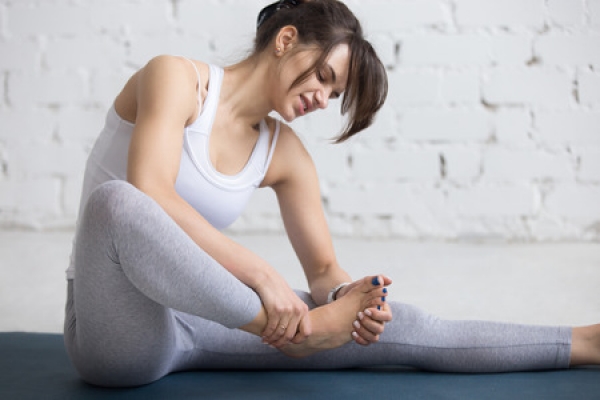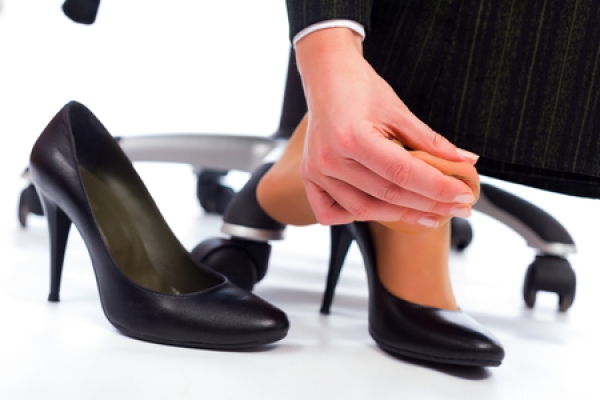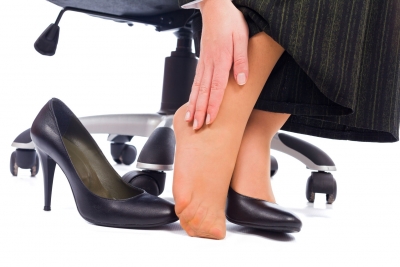Connect With Us
Blogs

Women Foot Health (3)
March is Women’s History Month. At Superior Foot & Ankle Center we thought we’d help celebrate our Los Angeles County women by providing tips on taking good care of their feet.
Bunion Prevention
Although men can also get bunions, it is a deformity that plagues women more frequently and this is due in part to shoes. High heels that force the foot forward exerting excess pressure on the toes and styles with narrow, pointy toe boxes are a contributing factor in the development and progression of bunions. In some cases, the tendency for the toe joint to move out of place is genetic. There are exercises that can be done to strengthen toes and feet and help prevent bunions. The podiatrist may also recommend a custom orthotic device to realign the foot properly and relieve pressure on the toes. If you notice your toe moving out of place, even slightly, it’s important that you make an appointment at our Long Beach office by calling (562) 420-9800. The earlier our podiatrists, Dr. Victoria M. Foley and Dr. Constance Ornelas, are able to diagnose a bunion the greater chances of being able to slow its progression.
Importance of Good Footwear
Well-made footwear for women is important for other reasons beyond bunion prevention. It’s essential that your shoes have good arch support (often lacking in fashion boots and some other styles) in order to avoid heel pain. On average, women walk 3 miles more a day than men, and a cushioned insole can greatly increase comfort. A less positive statistic: it’s estimated that up to 90% of women are wearing shoes that are too small for their feet. Get your feet professionally measured when buying new shoes and understand that your foot size can change over time.
As You Age
It’s natural as you get older for your feet so show some signs of “wear and tear.” However, that does not mean that foot pain is “normal” as a senior. Fat pads on the soles and heels may deteriorate requiring you to add some gel or other padding to your shoes. Be on the lookout for stiffness in joints that may signal arthritis. It’s important to maintain a regular exercise routine and not to sit with your legs crossed for long periods of time to encourage good circulation. You may also notice symptoms in your feet that point to other, more serious systemic conditions such as diabetes or arterial disease. Alert your podiatrist to unusual symptoms such as loss of hair on your legs or toes, cold feet, or decreased sensation in your feet.
Healthy feet help successful women get where they want to go! If you have questions or concerns about your feet, don’t hesitate to contact us.
At Superior Foot & Ankle Care Center we see a high incidence of neuromas among professional women for whom running is the fitness activity of choice. A neuroma is a disorder where a nerve becomes inflamed and enlarged causing symptoms of pain, burning and tingling. Patients with neuromas often say it feels like there is a rock in their shoe or that their sock is bunched up under their foot. Women who spend their workdays in heels and then pound the pavement running after work may be unknowingly putting an extreme amount of pressure on the ball of their foot. What’s the high heel/high impact running connection? High heels push your foot forward and narrow toe boxes squeeze toes together—both of which put excess stress on a nerve that is located at the base of your toes in the ball of your foot. Combine this stress with the added irritation of high impact and repeated force from running and you have the perfect conditions for a neuroma to develop.
Unfortunately, many women don’t pick up on these signs right away. The symptoms usually come on gradually and massaging the ball of the foot or changing your shoes for a day or two may relieve the pain—but only temporarily. In fact, the temporary nerve damage can become permanent if a patient does not seek professional podiatric treatment promptly.
Relieving Symptoms
You can’t see a neuroma on an x-ray or diagnose it with a lab test. Our podiatrists, Dr. Victoria Foley or Dr. Constance Omelas will examine the affected foot and palpate the nerve as well as ask questions about your symptoms and their duration to determine how far your condition has progressed. There are several treatment options available, including:
- Rest from activities that aggravate the foot
- Icing
- Over the counter anti-inflammatory medications
- Orthotic devices to reduce compression and increase support to the foot
Surgery is reserved for severe cases where other methods have not worked. If you wear heels, run and are experiencing any pain or odd sensations in the ball of your foot contact our Long Beach office for an appointment at your earliest opportunity by calling: (562) 420-9800.
At Superior Foot & Ankle Care Center we treat many women with foot problems that could have been avoided by choosing different shoes. Today, there are many attractive shoe designs that do not harm your feet. Short-term fashion choices can lead to long term foot health problems. Below are 3 types of shoes to avoid:
- High heels—shoes with high heels (2 inches or more) can cause a host of foot problems. First, the height of the heel can cause wobbling and instability which results in ankle sprains. High heels put extra strain on the muscles and ligaments of the ankle as they struggle to keep your foot in proper position. Continuing to wear high heels after a sprain is likely to set up a dangerous cycle of repeated sprains, increased weakness and eventually chronic ankle instability and pain. In addition, the design of high heels forces your toes forward, causing them to spend long hours cramped and squeezed. This increases the risk of bunions, hammertoes and other toe deformities.
- Stiff backed pumps—shoes with an overly hard heel counter can lead to a condition commonly referred to as “pump bump.” Officially known as Haglund’s deformity, a hard, bony enlargement forms on the back of the heel. When the back of pump rubs against the growth it causes irritation and inflammation. In some cases the bursa sac surrounding the deformity can become inflamed causing bursitis.
- Flip-flops—yes, these are comfortable and oh-so-easy to slip on and off but flip flops provide no support whatsoever for your feet. This increases the risk of your feet coming out of the shoe and getting cut or scraped and also the chances of twisting an ankle. The one exception to this is in gyms, public pools, spas and other places where covering your feet prevents contact with fungi and bacteria that can cause athlete’s foot, fungal toenail and
If a part of your foot, toe or ankle is causing you pain or you notice other symptoms such as bruising, swelling or redness, contact our Long Beach office for an appointment by calling: 562-420-9800. Our podiatrists, Dr. Victoria Foley and Dr. Constance Omelas will examine your feet and prescribe the correct treatment (in addition to changing your shoes) to relieve pain and prevent further injury.



